Prestbury Hill, Cheltenham
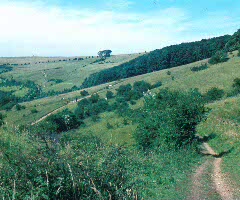
Stinchcombe Hill, Dursley
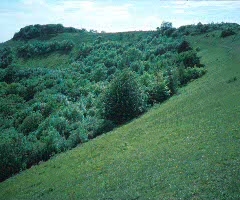
A secluded Cotswold valley
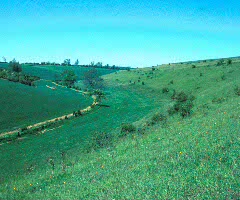
| Home | The Butterflies of Gloucestershire | Species | Habitats | Conservation |
Because of their foodplant requirements, some species have colonies which are restricted to particular types of place where those plants occur. Such species are the ones which are most in need of protection from habitat loss, whether by destruction, unsympathetic management or neglect.
Several common butterfly species may be seen in gardens and parks - or anywhere in the countryside.
The best sites for uncommon butterfly species in the area are mostly:
Other good sites include:
Other good Cotswold edge sites include
Prestbury Hill, Cheltenham
|
Stinchcombe Hill, Dursley
|
A secluded Cotswold valley
|
Edge Common, near Painswick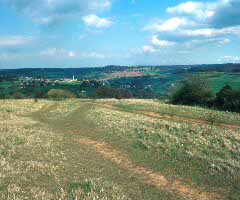
|
Grassland slope at a GWT reserve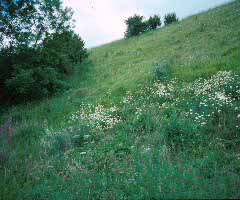
|
A slope too steep for farm machinery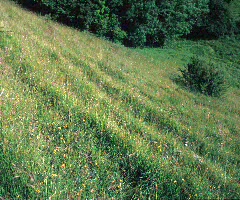
|
The adult butterflies need plenty of nectar from wild flowers. The best sites are those with enough grazing to prevent grasses from growing so tall and dense that they crowd out the flowers, but not too much grazing in the summer (or too many flowerheads are lost). Density of grazing is a Conservation issue.
Scrub (tree saplings, and various shrubs including gorse and hawthorn) grows on many grasslands. Whilst it provides some benefits for butterflies (shelter, and nectar or larval foodplants for some species) it can also spread over the whole area and destroy the grassland habitat (another Conservation issue).
To some extent, such open areas may be like grassland or scrub habitat, and some of the grassland butterflies may also be found in open woodland.
The Forest of Dean includes extensive areas of plantation, but also many wide forestry tracks including old railway lines. Felling operations result in new open areas, ensuring a continuing supply of young plantation habitat. A good range of butterfly species may be found in the Forest.
Some Cotswold woodlands are also managed as commercial forestry with frequent felling. Many however are allowed to grow to maturity without enough management to prevent the loss of butterfly habitat. When eventually there is some felling, it may be too late for some species lost from the area - their nearest colony may be so far away that natural recolonisation is very unlikely (a Conservation issue).
Forest of Dean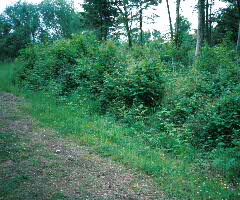
|
Forest of Dean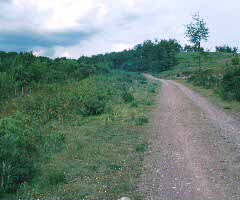
|
A Cotswold wood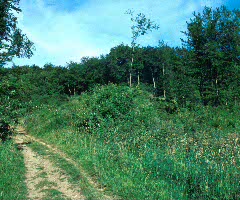
|
Lower Woods, Severn Vale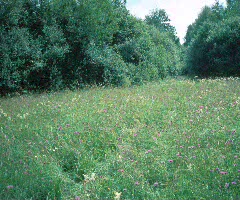
|
There are also quarries in the west of the county, on the carboniferous limestone.
The old network of railway lines was created at a time when the surrounding countryside was rich in grassland butterfly habitat. Tracksides, embankments and cuttings along disused railways still provide some very good habitat through areas where crops are now grown.
A common feature of such sites is very shallow soil and short, sparse vegetation grazed by rabbits and deer perhaps, but usually not by sheep or cattle. They can also be quite sheltered, so they provide a hotter microclimate than more open areas with more vegetation.
Some of the lakeside habitat in the Cotswold Water Park (created by gravel extraction) is good for some butterfly species.
Old quarry on Painswick Hill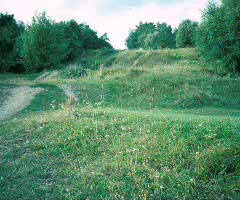
|
Old railway cutting in the Cotswolds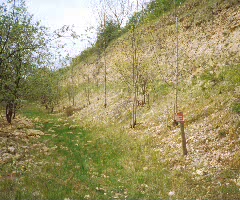
|